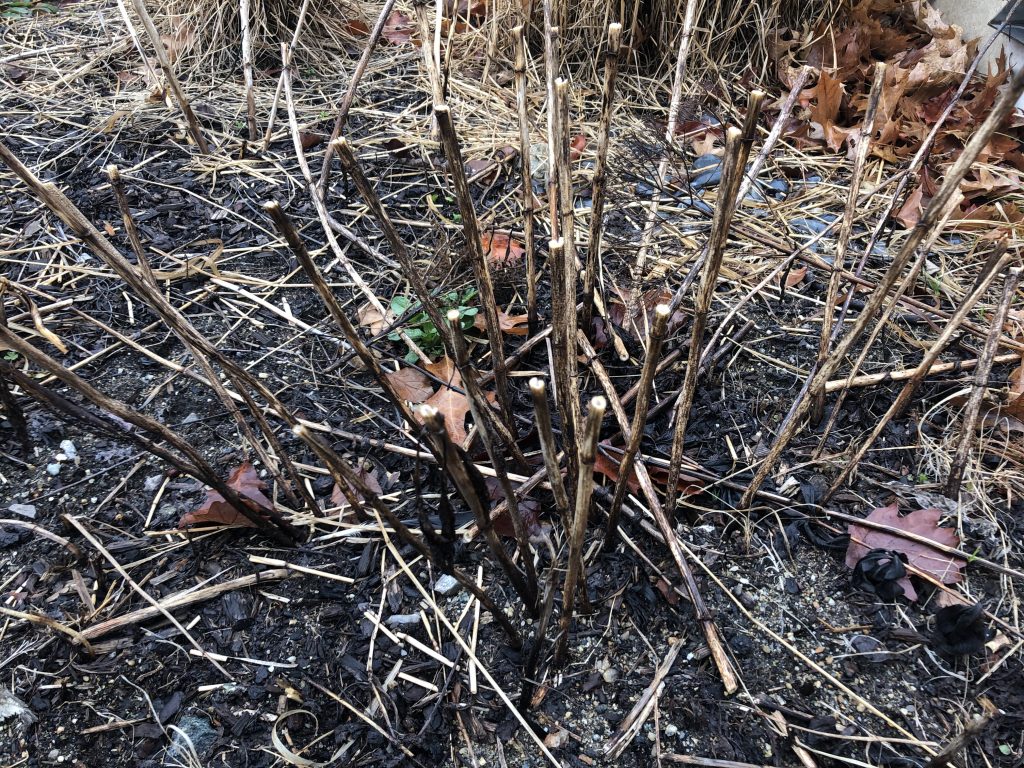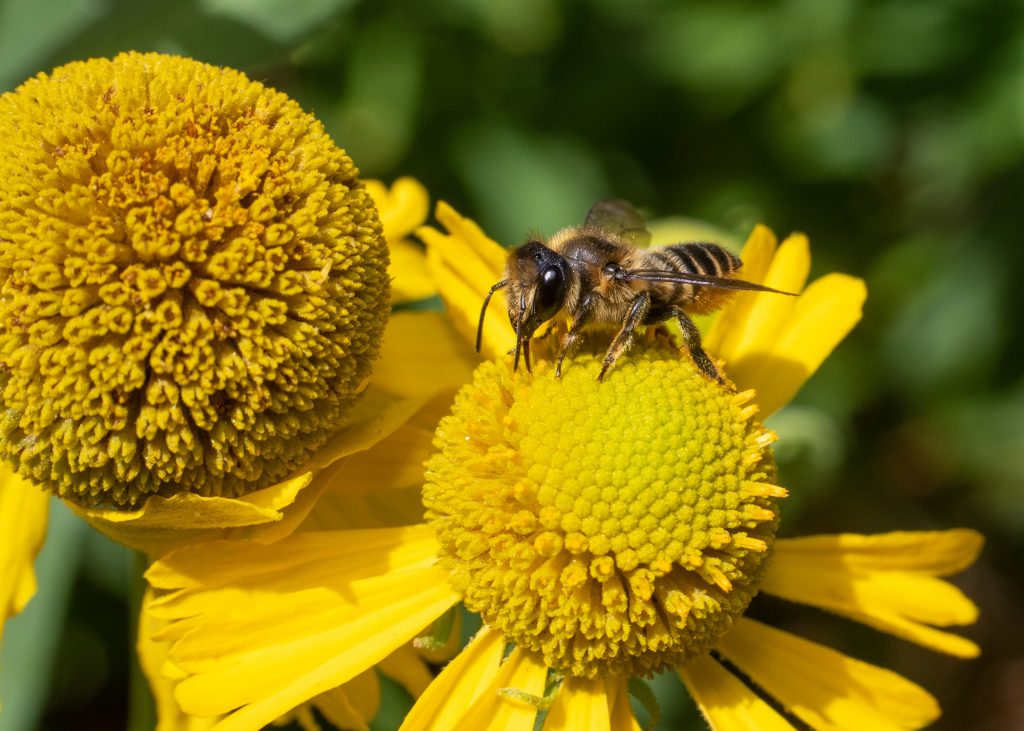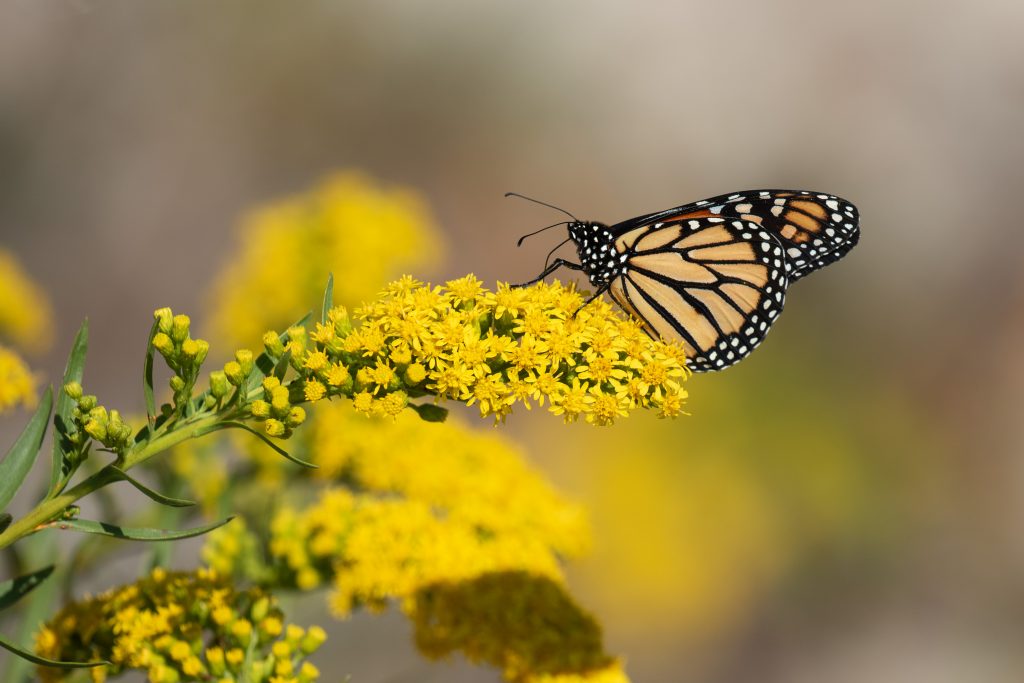About 30% of New England’s native bees build nests above ground. Besides bee hotels (many of which have their own issues), a great way to support these above-ground nesting bees is to leave dead plant stems standing in gardens. Bees will lay and provision offspring in these hollow or pithy stems. TPI members are often asked by gardeners, “when is the best time to cut down stems?” The answer is at least two years (ideally never), which is longer than you might think. Let’s review bee and plant biology to understand why.
Year 1: Plant stems are growing. Native plants like joe-pye weed, elderberry, wild bergamot, mountain mint, and swamp milkweed produce hollow or pithy (e.g. soft, spongy tissue) stems suitable for nesting bees. Bees won’t nest in these actively growing stems. At the end of the growing season (December through March), cut the stems back to between 6-18” tall. Use sharp tools to ensure a clean cut. By cutting back the stems, you have created homes for next year’s bees.

Year 2: Bees active during this year will nest in the stems you left standing. They will lay eggs in the stem and provision each egg with a nutritious ball of pollen and nectar. Inside the stem, bees will develop from eggs into larvae and adults that hibernate through winter. Bees won’t emerge from stems until next growing season. Remember to cut back the new, green stems produced this year for next year’s bees.

Year 3: In spring of year 3, stems produced in year 1 still contain bees; stems produced in year 2 do not contain bees. Leave both generations of stems standing throughout the year. Spring-active bees will emerge from year 1 stems by June, whereas fall-active species might not emerge from year 1 stems until August or early September. During this time, new bees will nest in year 2 stems, so leave them standing!
While this may seem like an awfully long time to leave stubble in a garden, it is the only way to ensure that native bees find safe, undisturbed places to nest. Posting signage in your garden to inform visitors about how gardens can be managed to balance aesthetic and ecological goals can be helpful.


